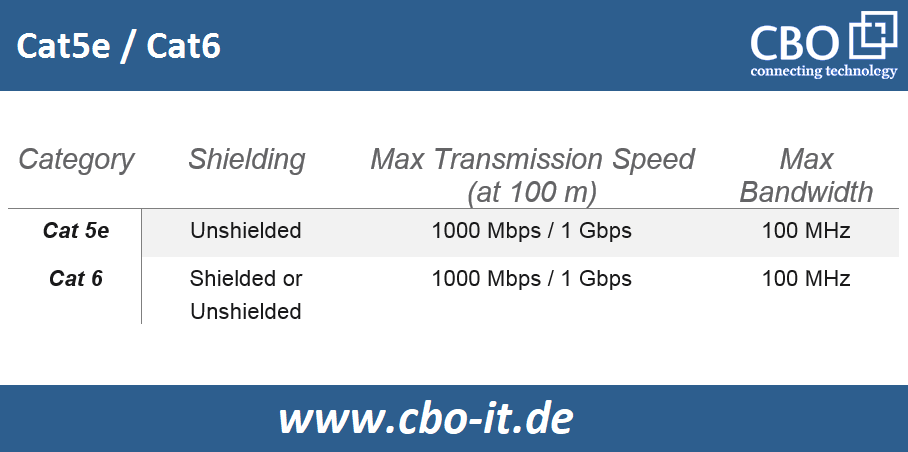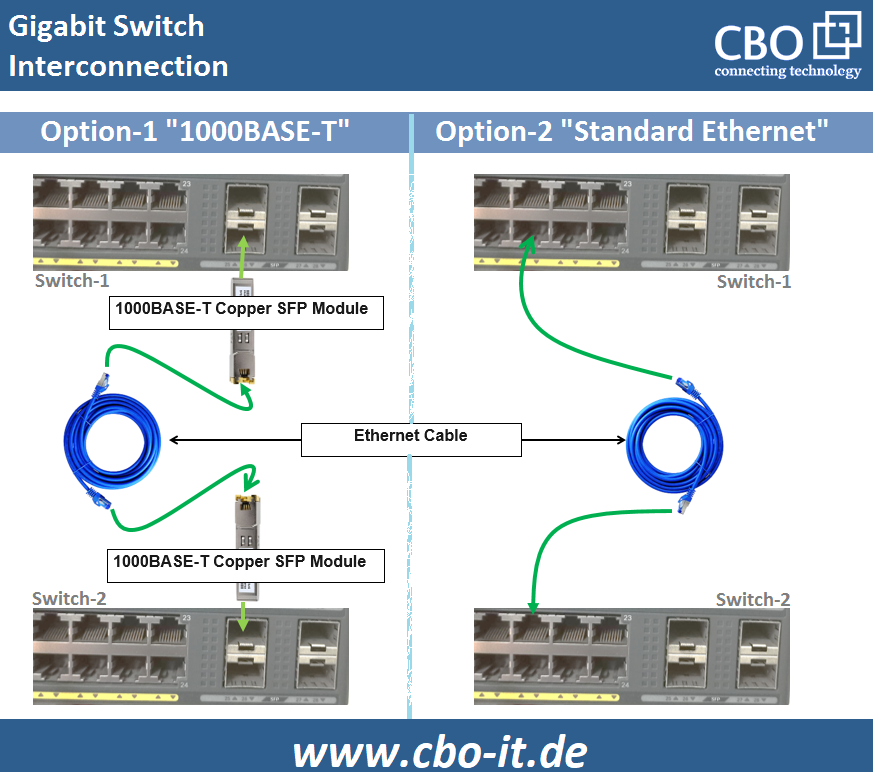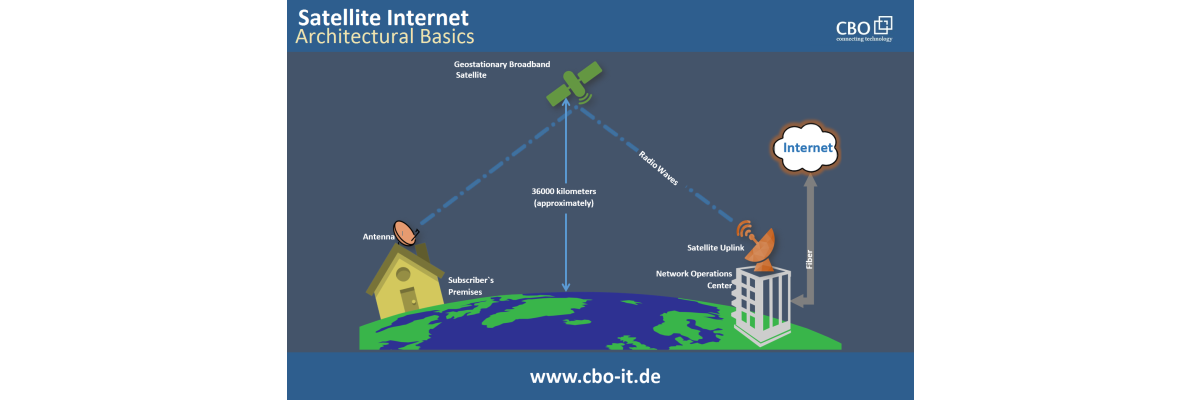Technologies intended to increase the speed of networks continue to develop rapidly. Meanwhile, maintaining configuration flexibility and high port utilization is essential for equipment deployed at the intersections of traditional copper and newer optical fiber networks. 1000BASE-T copper SFP modules and 1000BASE-T Ethernet cables have become the best option to maximize port flexibility and maximum port utilization. This article will discuss the two available interconnection options between 100BASE-T Ethernet switches that come with SFP ports.
1000BASE-T Ethernet cable & 1000BASE-T SFP
Before moving ahead, let us discuss some basics about standard Ethernet cables and 1000BASE-T (IEEE 802.3ab). 1000BASE-T is a standard related to Gigabit Ethernet copper cabling where "T" represents twisted pair cabling. 1000BASE-T offers speeds of 1000 Mbps over four (4) unshielded twisted pairs of Category 5 or superior grade cabling (such as Cat5e and Cat6). 1000BASE-T allows a network segment with a maximum length of 100 meters which can be used for server switching, LANs, desktop switch uplinks in data centers or on the desktop directly for broadband applications. This standard supports auto-negotiation between 1000Mbps and 100Mbps networks. The most prominent feature of 1000BASE-T is that it enables users to maintain the existing copper cabling links instead of rewiring and replacing them with optical fiber links. Cat5e and Cat6 network cables are available for connecting two switches to achieve 1 Gigabit Ethernet link. Details of the two categories of cable are shown in the following table.

Connection to 1000BASE-T switch: 1000BASE-T SFP or Ethernet cable
Upgrading the network is a common practice to meet the demand for faster applications. An up-gradation to Gigabit Ethernet is crucial for at least two reasons: faster backbones and faster systems. This brings the potential for low-cost products, backward compatibility, interoperability, freedom of choice in product selection, and interoperability. When you connect two 1000BASE-T switches with SFP ports to achieve Gigabit Ethernet, there are two methods: through standard Ethernet cable plugged into the built-in Ethernet ports of each switch, or use the SFP ports with a copper SFP module.
Is there a difference between the above mentioned two methods, and which one is the preferred one? Now we will discuss.
Interconnection Modes of 1000BASE-T Switches with SFP Ports
If we use 1000BASE-T SFP copper modules, we need to plug these modules into the SFP ports available on the switches; then, a Category-5 Ethernet cable is used to achieve connectivity. The other solution is more straightforward: it takes advantage of the switch`s ethernet ports by directly inserting a standard Ethernet cable (Cat5 / Cat5e / Cat6 / Cat6a) to connect the two switches. The following exhibit shows the basic scheme of the two options as mentioned earlier;

Which method to choose?
The two methods generally provide the same speed over the network, and the integrated Ethernet port offers precisely the same performance as an SFP module using copper cabling. If your 1000BASE-T switches have both types of ports (SFP Ports and Ethernet Ports) that either of the two methods is suitable. But since the 1000BASE-T copper SFP module incurs additional costs and increases installation time, utilization of standard Ethernet cables is recommended. However, the switch SFP ports exist for a specific reason: SFP modules inserted into the ports are intended for scenarios connectivity between an all-copper edge switch, and an all-SFP distribution switch is required. Switches come with SFP slots to support connectivity to fiber optic-based networks either to communicate to other optical fiber devices or to achieve connectivity over distances that copper transmission cannot offer at gigabit speeds.
Conclusion
While upgrading your network to 10 Gigabit Ethernet or 1000Mbps Gigabit Ethernet, you can use the 10GBASE-T/1000BASE-T SFP module or a standard Ethernet cable to connect two switches depending on the type of switches you have. For 1000BASE-T switches with SFP ports and built-in Ethernet ports, it is suggested to use the built-in Ethernet ports unless you don't have spare ports available. And keep the SFP ports spare for future connectivity to an optical fiber-based network for long-distance transmission. As for connecting a switch with SFP ports to a switch with only Ethernet ports, a 10GBASE-T copper or 1000BASE-T SFP module should be plugged into the SFP port, then connect the SFP copper module with the standard Ethernet ports on the other switch using a standard Ethernet cable.
 English
English
 Deutsch
Deutsch
 Espaniol
Espaniol










